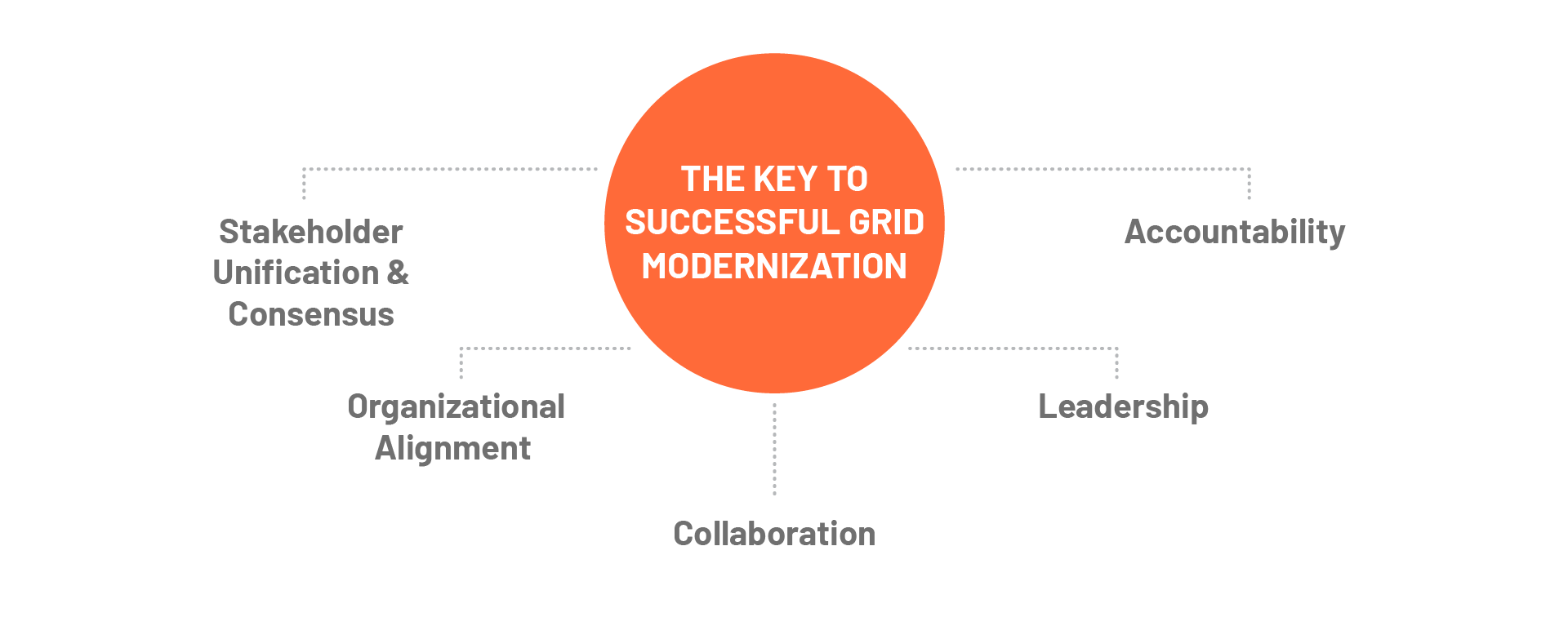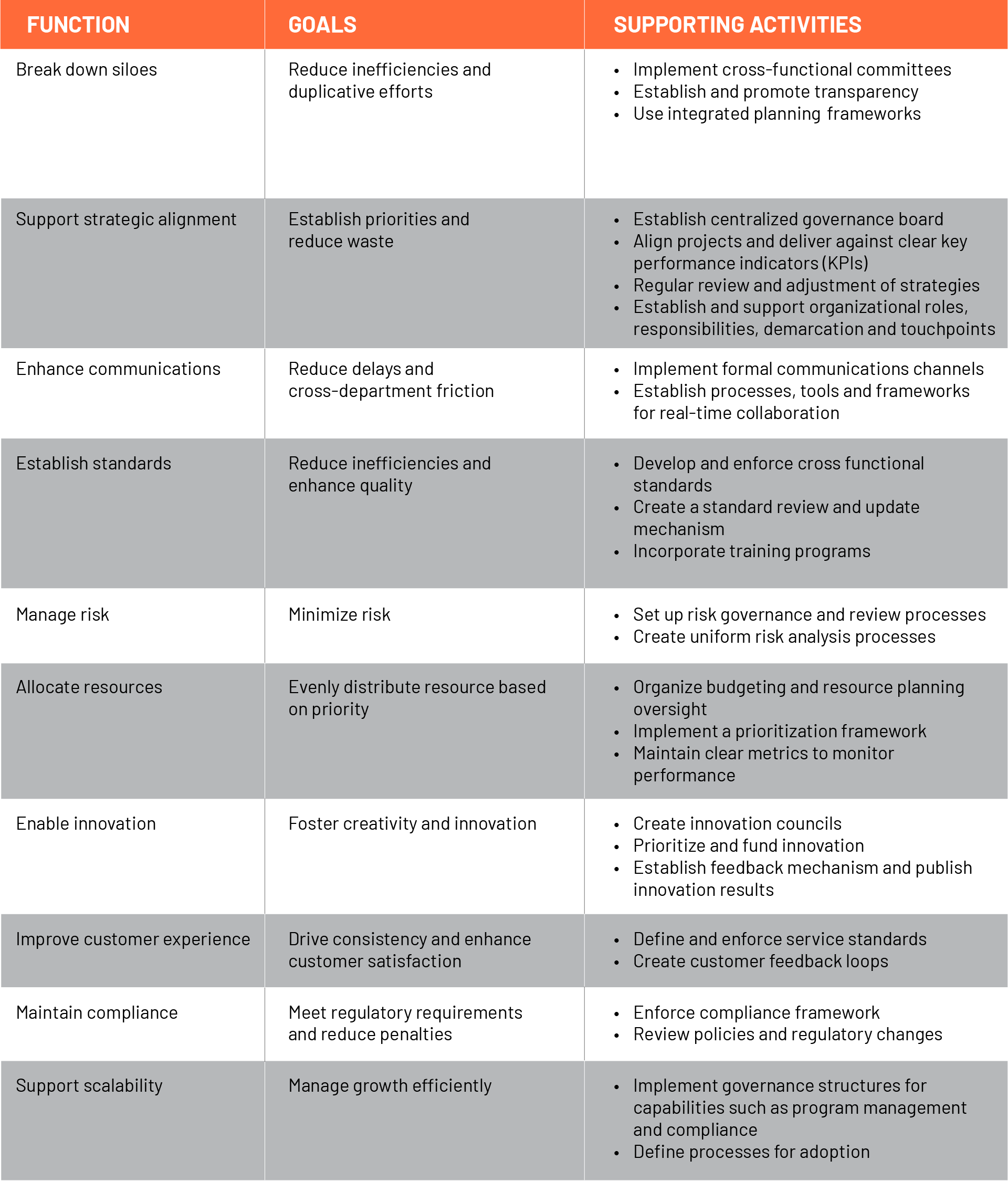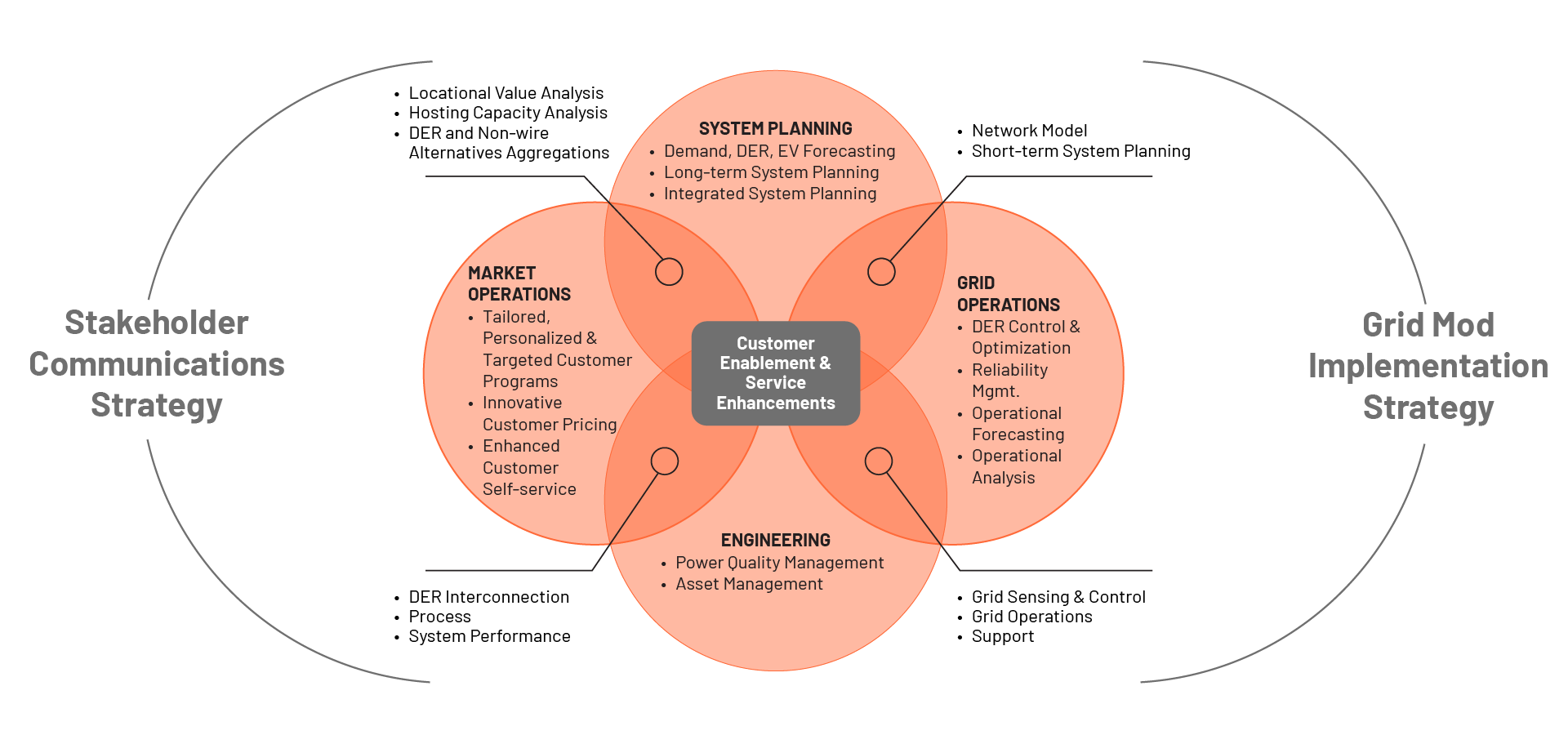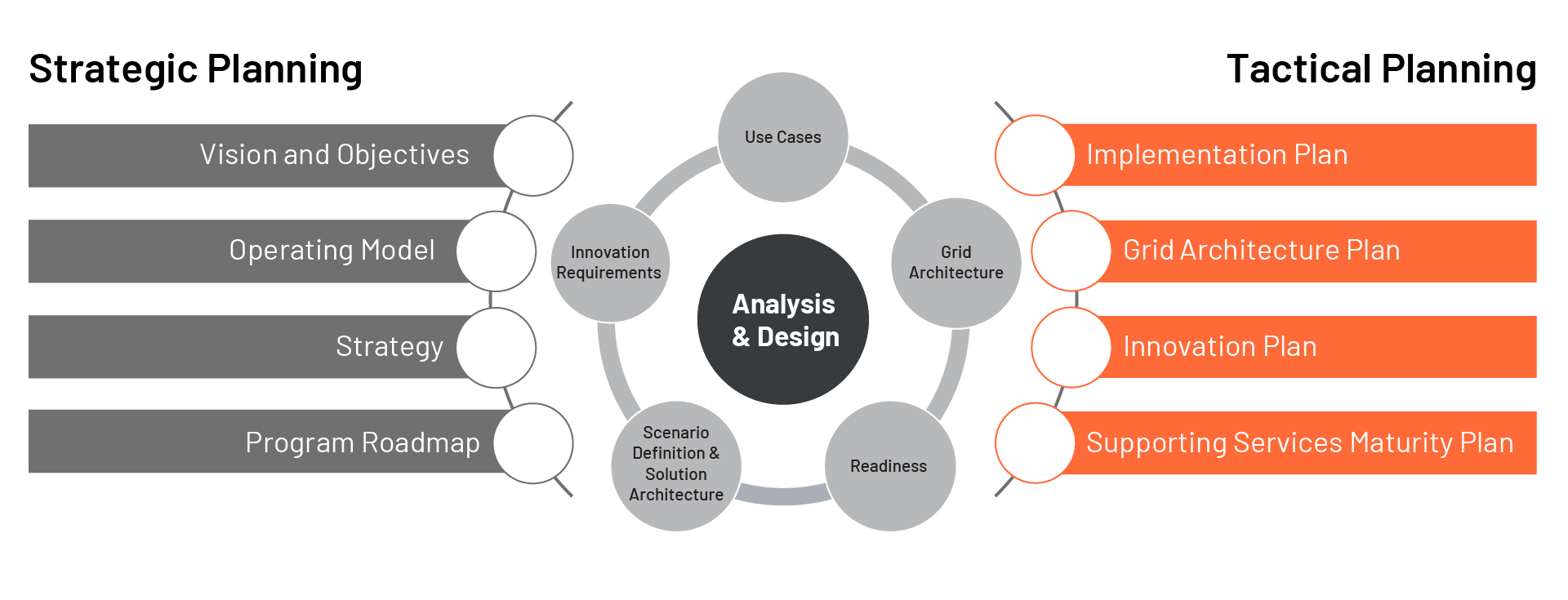Among specific drivers forcing power utilities to modernize the generation and distribution of electricity:
- Reliability and resiliency challenges.
- Integration of renewable energy.
- Expectations of efficiency and cost savings.
- Consumer empowerment.
- Support for electrification.
- Pursuit of climate resilience.
Modernization of the power grid is mostly a digital transformation, meaning that the integration of new and existing technology becomes the center of how the grid is engineered and operated. It is the technology-enabled grid that makes it possible to respond to such drivers of change. However, the value of technology is maximized by integrating people, functional processes and organizations.
The following are examples where utilities are starting to transform to respond to the drivers to modernize:
- Advanced technology. The modern grid utilizes integration of digital sensors, controllers and head-end systems in its operational processes, whereas the traditional power grid relies heavily on electromechanical equipment to control the flow of electricity locally. This technology allows for the operations capabilities required to manage a more dynamic grid, including interconnected renewable resources, energy efficiencies and the electrification of transportation.
- Integrated planning. Disjointed grid planning across generation, transmission and distribution has been acceptable in the past — and grid operations were able to keep pace with unexpected cross-topologies problems as needed due to the relatively single purpose and less integrated nature of the grid. The modernization of a utility’s grid planning functions is foundational in preparing the grid to adapt to increasing dynamics. Implementation of sophisticated planning and analysis tools, along with establishment of robust data sources, are now a focus for grid planning organizations to address the complexities of integrated planning.
- Operational impacts caused by renewable generation. Growth of renewable energy resources on the grid has driven a growing conflict around roles and responsibilities across traditionally siloed organizations. In the past, the generation function was solely within the domain of the generation organization; the transmission and generation operations (TGO) organization was solely responsible for the operations of generation on the grid. Now, with an increasing amount of renewable generation resources connected to both the transmission and distribution systems, the number of generation-related stakeholder organizations that can impact grid stability has also increased.
The question remains for most utilities: What organization operates which generation resources? For example, there is a spectrum of distribution system operating models to consider, with one end of the spectrum being highly centralized and the other being highly distributed. Utilities must work across stakeholder organizations to clearly define an operating model that suits their requirements and see that roles and demarcations are clearly defined and executed by formal procedures and/or automation. Operating models are expected to be different across the utility industry, but generation, transmission and distribution operational organizations can no longer work in isolation from each other.









